A Guide to the Song Dynasty Tombs: Discovering China’s Imperial Heritage
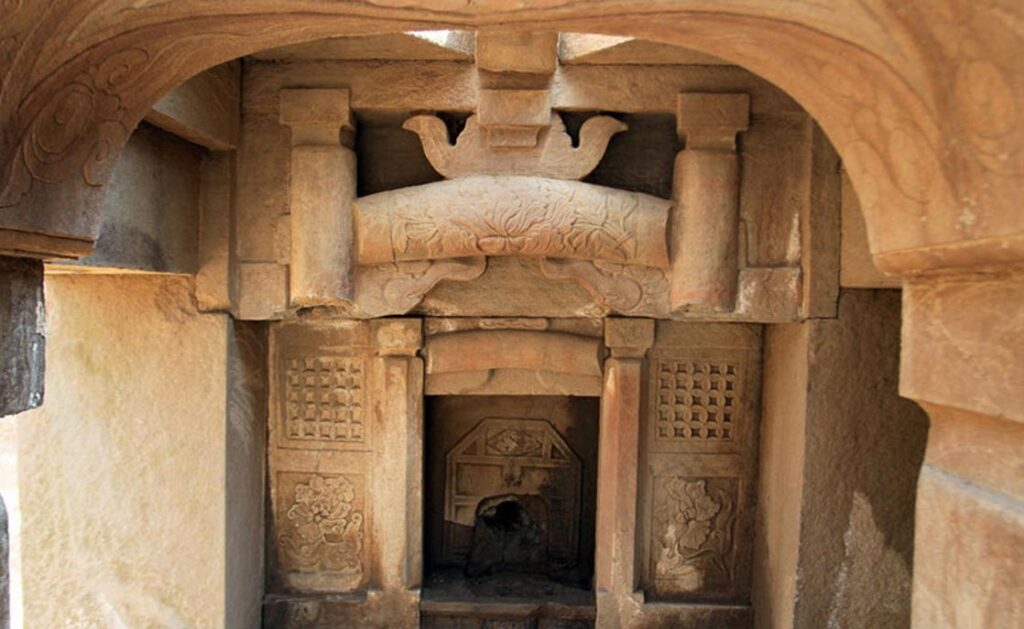
An Essential Guide to Visiting Song Dynasty Tombs
In This Guide
- An Essential Guide to Visiting Song Dynasty Tombs
- The Rich History and Legends of Song Dynasty Tombs
- Main Highlights: What You Absolutely Can’t Miss
- Planning Your Visit: A Practical Guide
- Tickets: Prices, Booking, and Tips
- How to Get There: A Complete Transportation Guide
- Local Cuisine and Accommodation Nearby
- Frequently Asked Questions
- Final Thoughts on Your Trip
Exploring the enchanting world of the Song Dynasty (960-1279 AD) is akin to stepping into a vibrant tapestry of history, culture, and artistic achievement. Nestled within this rich narrative are the majestic tombs of the emperors who once ruled over one of China’s most prosperous periods. The Song Dynasty is celebrated not only for its advancements in technology and commerce but also for its profound contributions to art and literature.
Visiting the tombs of the Song Dynasty offers a unique opportunity to connect with this illustrious past. These burial sites, scattered across various locations in China, are not just final resting places; they are historical landmarks that embody the essence of an era marked by innovation and cultural flourishing.
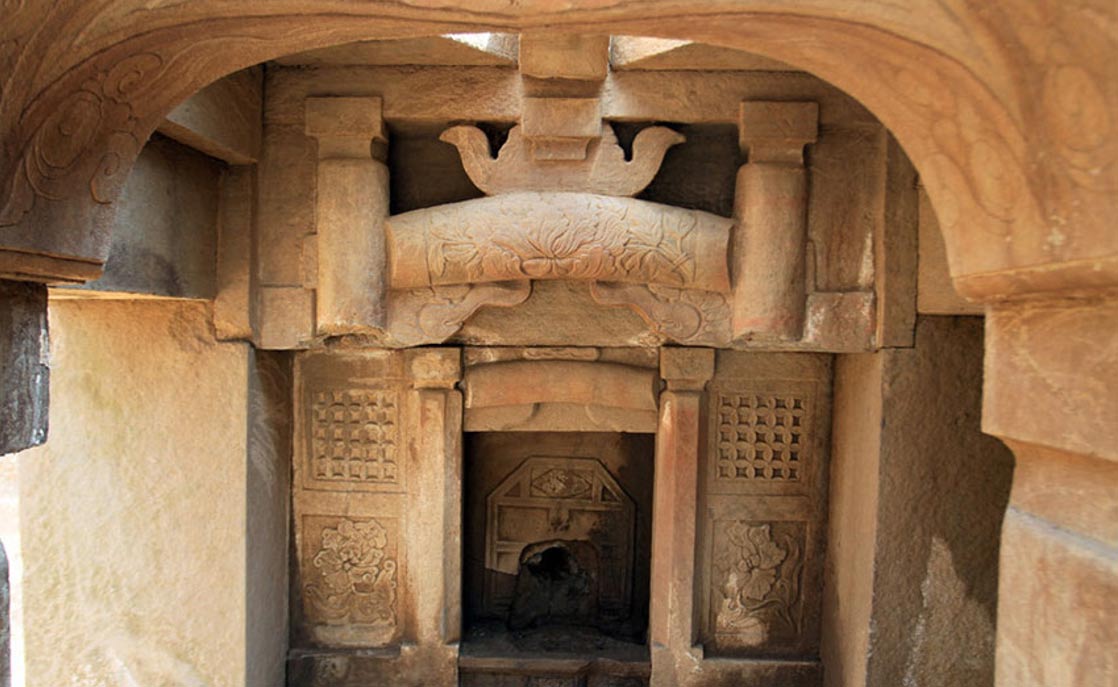
Song Dynasty Tombs.
Why Visit the Song Dynasty Tombs?
- Historical Significance: The tombs are the final resting places of emperors and empresses, including the last emperor, Zhao Bing, whose tragic end marked the fall of the dynasty.
- Architectural Wonders: The structures and sculptures found within the tomb complexes reflect the artistic styles of the period, showcasing intricate craftsmanship and design.
- Cultural Insights: The tombs provide a glimpse into the funerary practices of the Song Dynasty, offering insights into the spiritual beliefs and values of the time.
What to Expect
As you traverse the serene landscapes surrounding these tombs, you’ll encounter not only the imperial mausoleums but also the stunning stone sculptures—guardians of the tombs that illustrate daily life during the Song era. The atmosphere is one of reverence, allowing visitors to appreciate the historical weight of the sites while enjoying the natural beauty enveloping them.
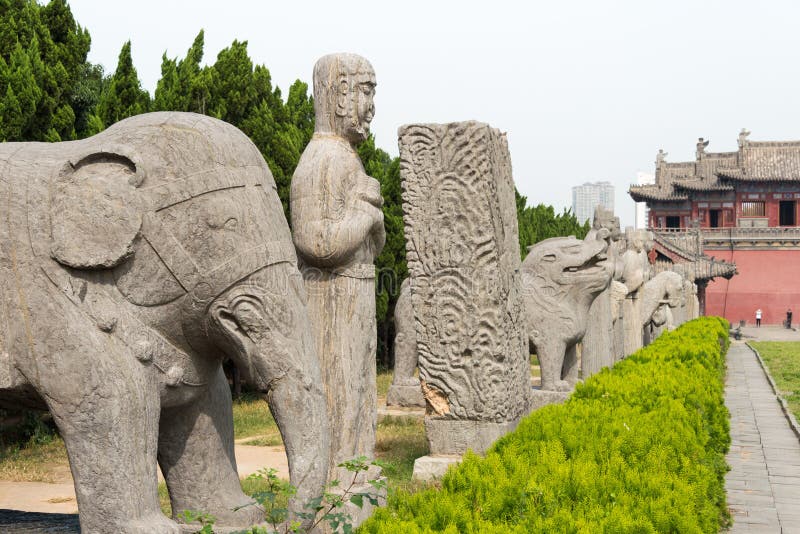
Song Dynasty Tombs.
Whether you are an ardent history buff or simply someone with a curiosity about ancient cultures, the Song Dynasty tombs promise an enriching experience. Prepare to embark on a journey through time, exploring the legacy of a dynasty that shaped the course of Chinese civilization and left an indelible mark on world history.
The Rich History and Legends of Song Dynasty Tombs
The Song Dynasty (960-1279 AD) represents a pivotal era in Chinese history, marked by remarkable advancements in technology, commerce, and culture. This period is not only significant for its achievements but also for its rich tapestry of legends and historical narratives, particularly associated with the tombs of its emperors.

Song Dynasty Tombs.
A Glimpse into the North Song Dynasty Imperial Tombs
Nestled in the serene surroundings of Gongyi City, the North Song Dynasty Imperial Tombs serve as the final resting place for seven emperors of the Northern Song Dynasty. This sprawling necropolis is home to nearly 1,000 mausoleums, each with its own unique story to tell. The grandeur of the tombs reflects the power and sophistication of the Song Dynasty, showcasing architectural prowess that has withstood the test of time.
Key Features:
– The Upper Palace: Enclosed by a 1,000-meter-long square wall, the upper palace is the heart of the complex. It features a pyramid-like platform that conceals the underground palace beneath it. Four entrances lead into the tomb area, each flanked by pairs of majestic stone lions and servant sculptures, symbolizing protection and service.
– Stone Sculptures: The tombs are adorned with hundreds of stone sculptures that depict the everyday life of the era, moving away from the traditional mystical representations found in earlier dynasties. These sculptures not only serve an artistic purpose but also offer a glimpse into the social and cultural fabric of Song society.
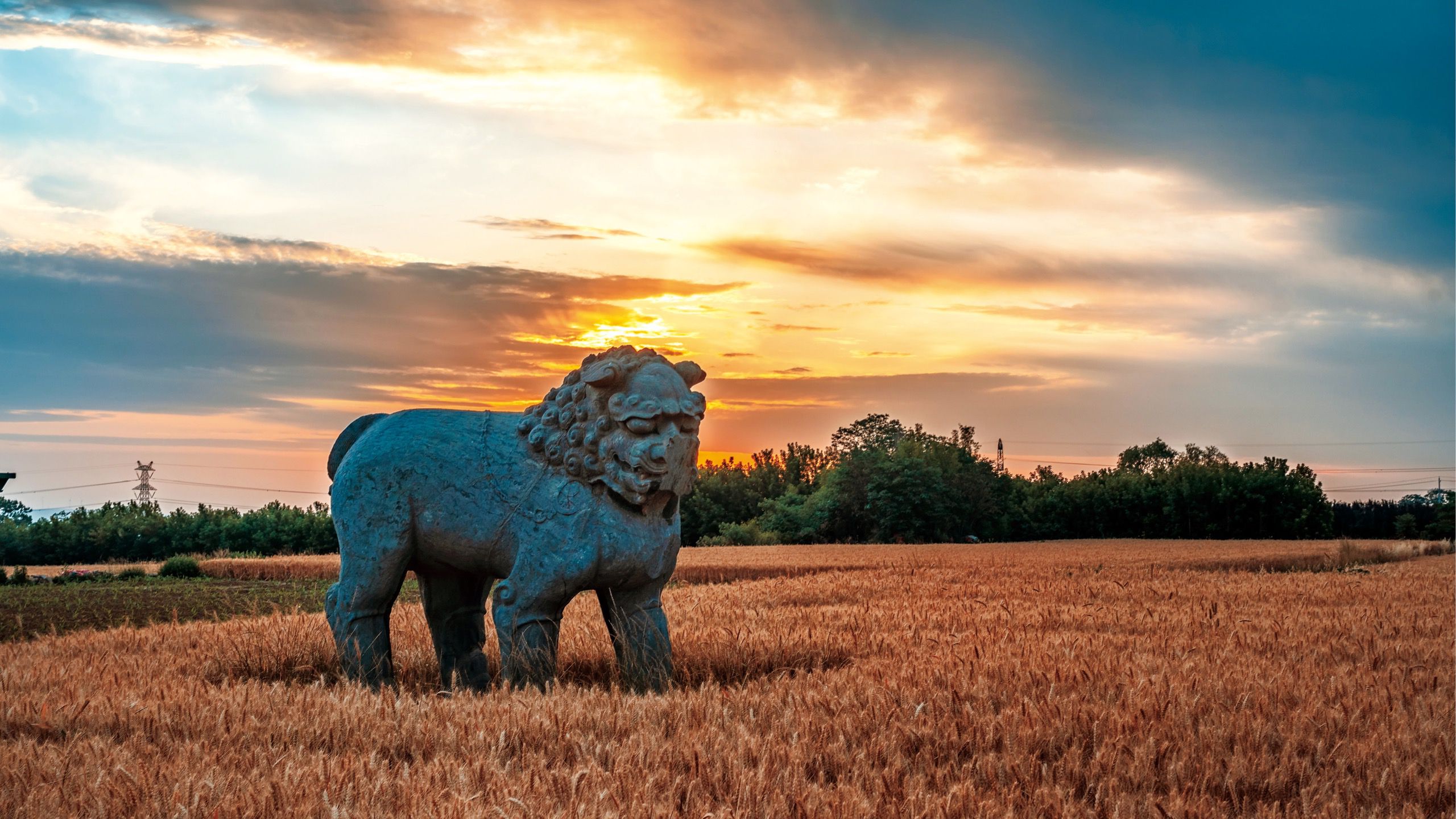
Song Dynasty Tombs.
Legends of the Song Dynasty
The tombs are steeped in legends that further enrich their historical significance. One of the most poignant tales is that of Zhao Bing, the last emperor of the Song Dynasty. At the tender age of eight, Zhao Bing faced the Mongol invasion during the fateful Battle of Yamen in 1279. In a dramatic act of defiance, he was thrown into the sea by a loyal official, symbolizing the tragic end of the Song Dynasty and the resilience of its spirit. This legend echoes through the ages, reminding visitors of the dynasty’s tragic yet heroic legacy.
Cultural Significance
The North Song Dynasty Imperial Tombs are not merely historical sites; they are vital cultural landmarks that reveal the philosophies, beliefs, and aspirations of a society that flourished over eight centuries ago. The tombs, with their intricate designs and symbolic sculptures, represent the Song Dynasty’s emphasis on the harmony between nature, art, and humanity.
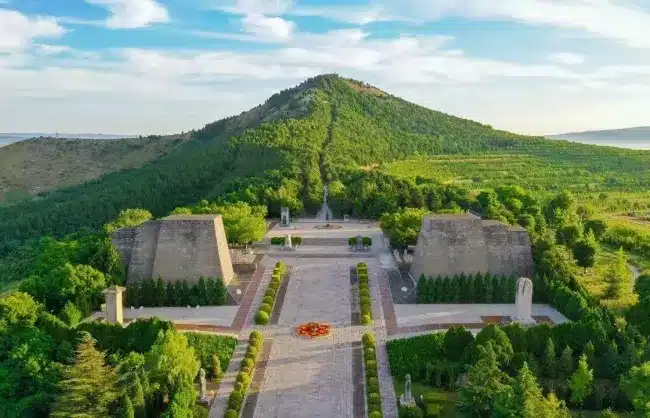
Song Dynasty Tombs.
Visiting the Tombs:
– Opening Hours: From 8:00 AM to 11:30 AM and 2:00 PM to 5:30 PM, welcoming visitors to explore their grandeur.
– Admission: Free of charge, making it accessible for all who wish to delve into the depths of Chinese history.
– Recommended Duration: A full day is advisable to fully appreciate the extensive grounds and the stories they tell.
Concluding Thoughts
The North Song Dynasty Imperial Tombs stand as a testament to an era rich in culture, art, and resilience. For international travelers eager to immerse themselves in Chinese history, these tombs offer a profound experience that combines the beauty of ancient architecture with the poignant narratives of a bygone dynasty. As you wander through this historical site, take a moment to reflect on the legends that shaped a nation and the emperors who once ruled it.
Main Highlights: What You Absolutely Can’t Miss
Discover the Majesty of the Song Dynasty Tombs
Embark on a historical journey as you explore the Song Dynasty Tombs (宋陵), a treasure trove of rich heritage nestled in the heart of China. These tombs serve as the final resting place for seven emperors from the Northern Song Dynasty and are surrounded by an impressive array of nearly 1,000 mausoleums. Here are the main highlights you absolutely can’t miss during your visit:
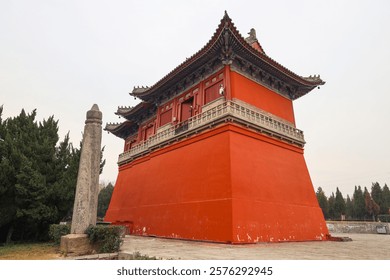
Song Dynasty Tombs.
1. The Upper Palace
At the northern end of the tomb complex lies the Upper Palace, a grand structure encircled by a long square wall measuring about 1,000 meters. This architectural marvel features entrances on each side and small platforms at the corners, creating a majestic and harmonious layout. The centerpiece is a pyramid-like platform that conceals the underground palace beneath.
2. Stone Sculptures
No visit is complete without admiring the hundreds of stone sculptures that adorn the tomb area. Each imperial tomb typically showcases 23 pairs of stone sculptures lining its passageways. Notably, pairs of stone lions guard the entrances, while pairs of servant figures stand inside, reflecting the era’s artistry and beliefs. The sculptures distinctly break from traditional mysticism, instead celebrating the everyday life and culture of the Song Dynasty, making them invaluable from both artistic and historical perspectives.
3. The Lower Palace
Though remnants of the Lower Palace are minimal, its historical significance remains profound. Located to the north or northwest of the Upper Palace, this area was once a dining room, hinting at the lavish feasts and ceremonies that took place here. Imagining the past grandeur of this space adds depth to the visit.

Song Dynasty Tombs.
4. Empresses’ Tombs
While the emperors’ tombs dominate the site, the Empresses’ Tombs are equally intriguing. Although smaller and less adorned with sculptures, they mirror the architectural style of their imperial counterparts, providing insight into the lives and legacies of these powerful women.
5. Cultural Experience
Visiting the Song Dynasty Tombs is not just about observing ancient structures; it’s also a chance to engage with local culture. The site is frequently visited by residents who come to pay their respects and make offerings, giving you a unique glimpse into the living traditions that honor this historical period. Take a moment to observe these rituals, as they enrich your understanding of the significance of the tombs.

Song Dynasty Tombs.
Practical Information
- Opening Hours: Daily from 8:00 AM to 11:30 AM and 2:00 PM to 5:30 PM
- Admission: Free
- Recommended Visit Duration: One day
- Location: No.84, Dufu Road, Gongyi District, Zhengzhou City, Henan Province
- Transportation: Accessible via Bus No.8, 25, 49, 116, 130, or 135, disembarking at Ganlu Temple (Jiangbin Hospital) Station.
Conclusion
The Song Dynasty Tombs offer an extraordinary opportunity to delve into the rich tapestry of Chinese history. From the stunning architecture of the Upper Palace to the intricate stone sculptures, each element tells a story waiting to be uncovered. Don’t miss your chance to experience this unique cultural heritage that celebrates an era of remarkable artistic achievement and imperial grandeur.
Planning Your Visit: A Practical Guide
Preparing for Your Journey to the Song Dynasty Tombs
Exploring the Song Dynasty Tombs (宋陵) offers travelers a unique opportunity to delve into China’s rich history and cultural heritage. Situated largely in Gongyi City, Henan Province, these ancient sites are home to the final resting places of seven emperors from the Northern Song Dynasty, complemented by nearly 1,000 mausoleums. Here’s everything you need to know to plan your visit effectively.
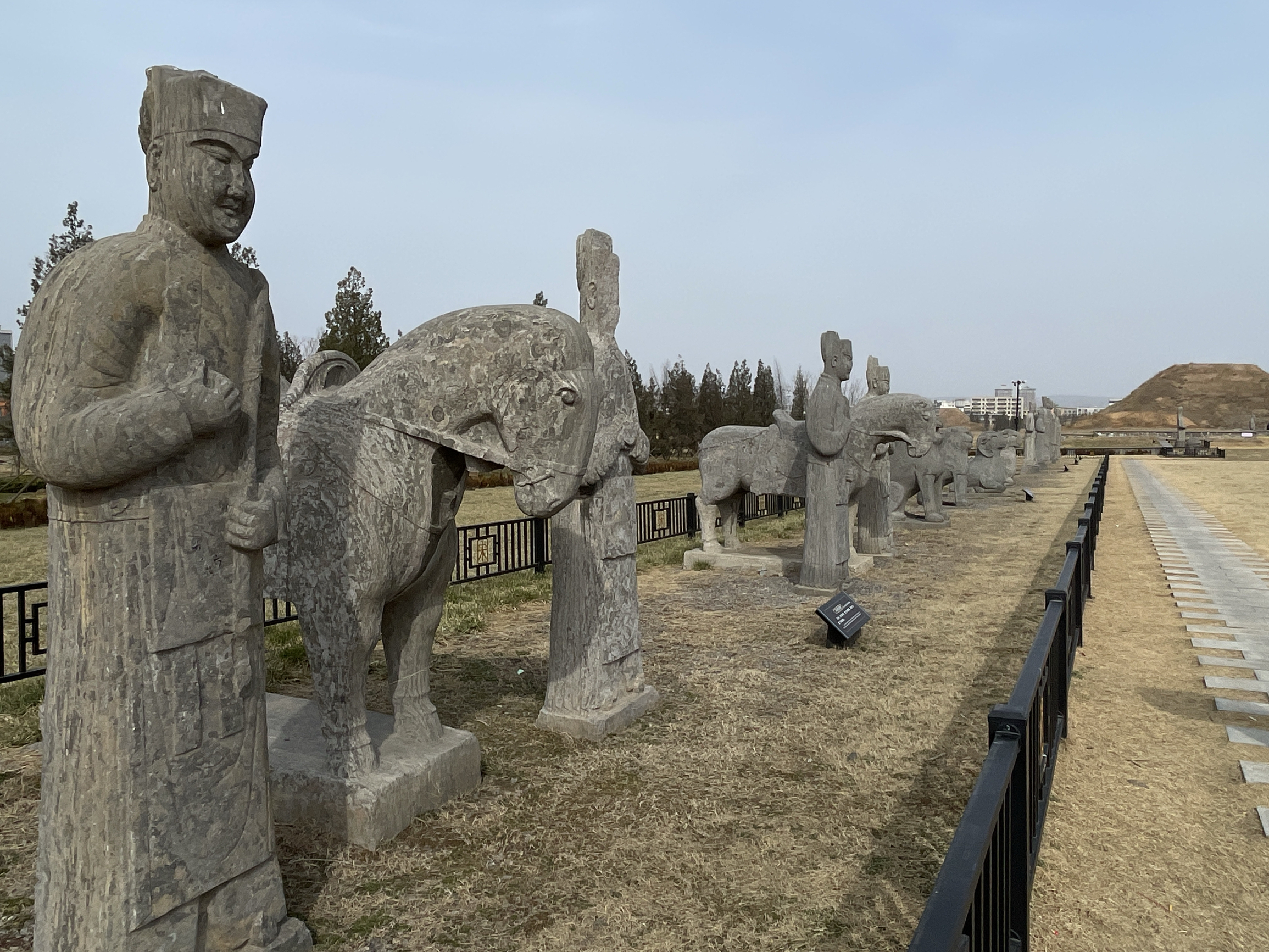
Song Dynasty Tombs.
Getting There
Location:
The North Song Dynasty Imperial Tombs are located at No.84, Dufu Road, Gongyi District, Zhengzhou City, Henan Province.
Transportation Options:
– By Bus: You can take several local buses, including Bus No. 8, 25, 49, 116, 130, or 135, and disembark at Ganlu Temple (Jiangbin Hospital) Station.
– By Taxi: Taxis are readily available in Zhengzhou and can take you directly to the tombs.
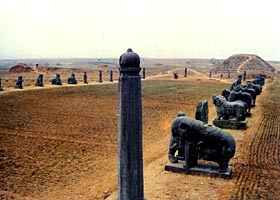
Song Dynasty Tombs.
Opening Hours
- Daily: 8:00 AM – 11:30 AM; 2:00 PM – 5:30 PM
Note: Ensure to arrive well before closing time to make the most of your visit.
Admission Fees
- Entrance Fee: Free
This makes the Song Dynasty Tombs an accessible cultural experience for all.
Recommended Duration
- Suggested Visit Time: One Day
Plan to spend a full day exploring the tombs and surrounding areas. The site is expansive, and there is much to see, including the intricately designed stone sculptures and the architectural layout of the tombs.
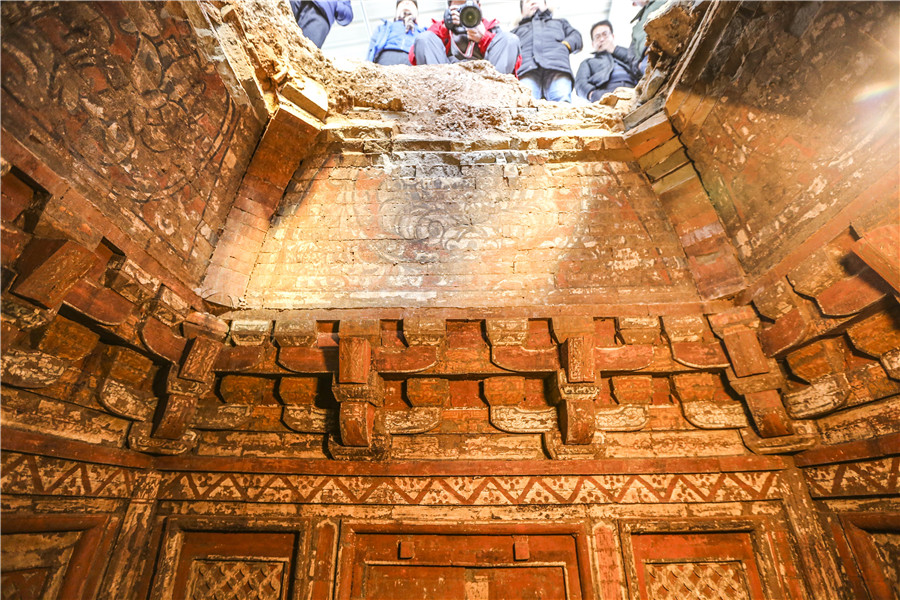
Song Dynasty Tombs.
What to Expect
- Tomb Complex: The site features an upper and lower palace. The upper palace is enclosed by a long square wall with entrances on each side. Inside, you’ll find a pyramid-like platform leading to an underground palace.
- Stone Sculptures: The tomb area boasts hundreds of stone sculptures, each adding to the historical narrative of the Song Dynasty. Each imperial tomb typically features 23 pairs of stone sculptures lining the passageway, with guardian lions at the entrances and servant figures within.
- Cultural Significance: The tombs reflect the artistic style of the Song Dynasty, moving away from mystical themes and instead emphasizing the everyday lives of people during that era.
Nearby Attractions
While in the area, consider visiting other historical sites and attractions in Zhengzhou:
– Songshan Mountain
– Shaolin Temple
– Henan Provincial Museum
– Yin Ruins
Tips for Travelers
- Best Time to Visit: Spring and autumn offer pleasant weather for exploring the tombs and surrounding areas.
- Cultural Etiquette: As these tombs are sites of historical significance, maintain a respectful demeanor. It’s common to see locals making offerings at the tombs, providing a glimpse into contemporary reverence for past emperors.
- Photography: While photography is generally allowed, be mindful of signage indicating restricted areas, and always be courteous to other visitors.
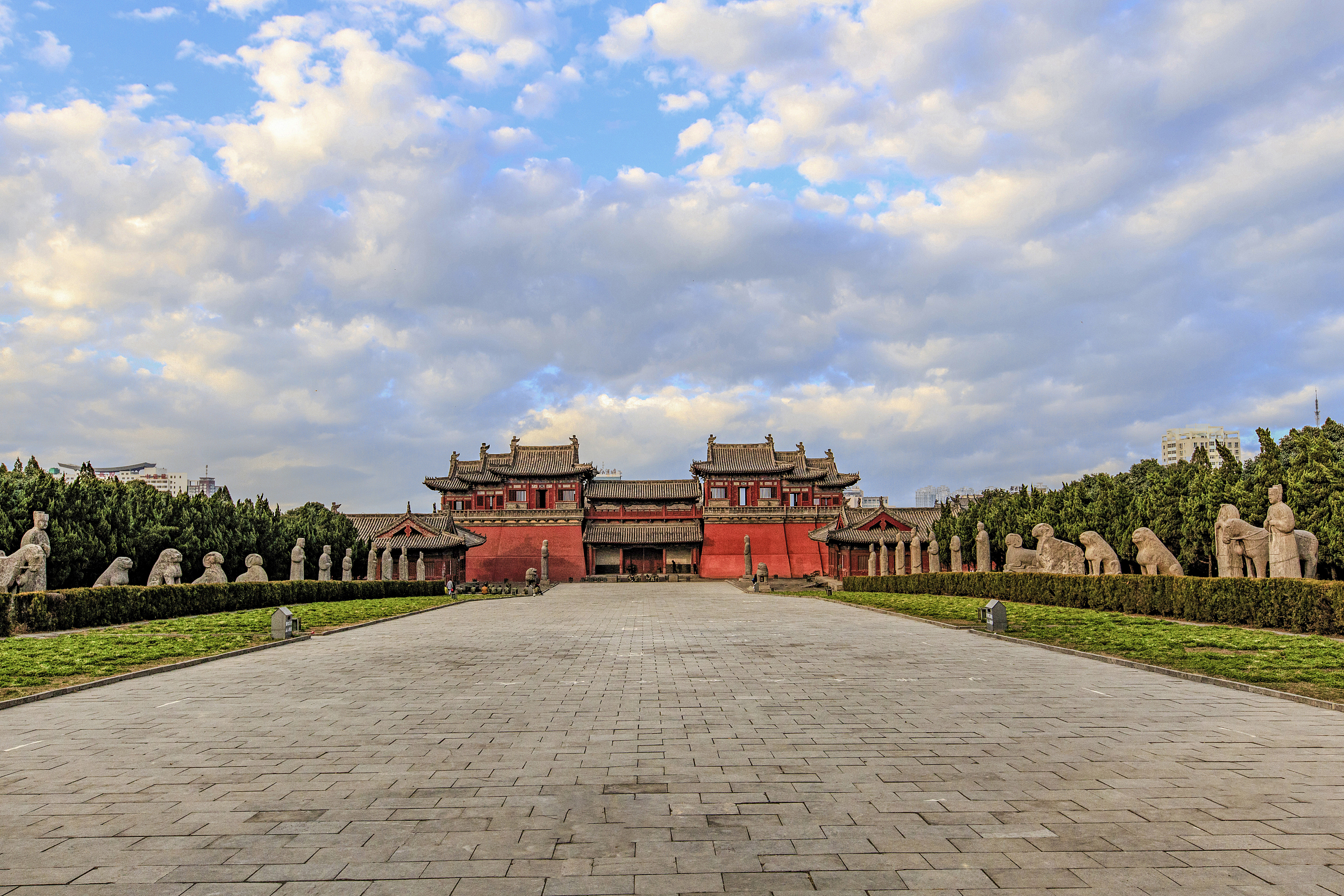
Song Dynasty Tombs.
Conclusion
A visit to the Song Dynasty Tombs is not merely a journey through ancient history; it’s an immersive experience that connects you with China’s imperial past. With this guide, you’ll be well-prepared to explore this extraordinary cultural landmark. Enjoy your historical adventure!
Tickets: Prices, Booking, and Tips
When planning your visit to the Song Dynasty Tombs, a treasure trove of Chinese history and culture, it’s essential to know the ticketing details to ensure a smooth experience. Here’s everything you need to know:
Admission Costs
- Ticket Price: Free
Yes, you read that right! Visiting the Song Dynasty Tombs is entirely free of charge, allowing you to explore the rich history without any financial constraints.
Booking Information
- Reservations: Not required
There’s no need to book tickets in advance or arrive early to secure a spot. Simply walk in during the operating hours to enjoy the site.
Visiting Hours
- Opening Times:
- Morning: 8:00 AM – 11:30 AM
- Afternoon: 2:00 PM – 5:30 PM
Recommended Duration
- Suggested Visit Time: Plan to spend one day at the tombs. This allows ample time to explore the impressive stone sculptures, the layout of the upper and lower palaces, and the serene surroundings.
Getting There
-
Location:
The Song Dynasty Tombs are situated at No.84, Dufu Road, Gongyi District, Zhengzhou City, Henan Province. -
Transportation Options:
You can easily reach the site by public transport. Take Bus No. 8, 25, 49, 116, 130, or 135 and disembark at the Ganlu Temple (Jiangbin Hospital) Station.
Tips for Your Visit
- Explore the Artistry: The tombs are adorned with hundreds of stone sculptures that reflect the everyday life of the North Song Dynasty, offering invaluable artistic and historical insights.
- Photography: Bring your camera! The unique architecture and intricate sculptures provide fantastic photo opportunities.
- Local Etiquette: If you observe locals making offerings at the tombs, be respectful of their traditions, as this is part of the cultural significance of the site.
By taking advantage of the free admission and the rich historical context, your visit to the Song Dynasty Tombs will undoubtedly be a memorable and enriching experience. Enjoy your journey through history!
How to Get There: A Complete Transportation Guide
Navigating to the Song Dynasty Tombs
Revered as a significant cultural and historical site, the Song Dynasty Tombs (宋陵) offer a glimpse into China’s rich imperial past. Located in Gongyi City, Henan Province, this serene complex houses the mausoleums of seven emperors from the Northern Song Dynasty and is adorned with nearly a thousand stone sculptures. Getting there is relatively straightforward, whether you’re traveling from within Zhengzhou or coming from further afield. Here’s how to navigate to this fascinating destination.
Getting to Gongyi City
- By Air:
- Nearest Airport: Zhengzhou Xinzheng International Airport (CGO) is the closest airport, approximately 50 km (31 miles) from Gongyi City.
-
Transfer Options: From the airport, you can take a taxi or pre-arranged shuttle service to Gongyi City. The journey typically takes about 1 hour.
-
By Train:
- Train Stations: Zhengzhou East Railway Station and Zhengzhou Railway Station both offer services to Gongyi.
- Travel Time: The train ride from Zhengzhou to Gongyi takes about 30-45 minutes, depending on the service.
-
Tickets: Purchase tickets at the station or via the official China Railway website or app.
-
By Bus:
- Bus Services: Several long-distance buses run from Zhengzhou to Gongyi. Head to the Zhengzhou Long-distance Bus Station for departure information.
- Duration: The bus ride will take approximately 1-1.5 hours, depending on traffic.
Local Transportation in Gongyi
Once you arrive in Gongyi City, reaching the Song Dynasty Tombs is easy:
- Public Bus:
- Recommended Routes: Take Bus No. 8, 25, 49, 116, 130, or 135.
-
Stop: Disembark at the Ganlu Temple (Jiangbin Hospital) Station. From there, it’s a short walk to the tombs.
-
Taxi Services:
-
Taxis are readily available and can be hailed or booked via apps like Didi Chuxing. A taxi ride from the city center to the tombs should take about 15-20 minutes.
-
Bicycle Rentals:
- For the more adventurous, renting a bicycle is an option. Many local shops offer rentals, and cycling can be a pleasant way to explore the scenic surroundings.
Visitor Tips
- Opening Hours: The Song Dynasty Tombs are open daily from 8:00 AM to 11:30 AM and 2:00 PM to 5:30 PM. Plan your visit accordingly.
- Admission Fee: Entrance to the tombs is free, making it an attractive option for history enthusiasts on a budget.
- Recommended Visit Duration: Allocate at least a full day to explore the tombs and their surroundings thoroughly.
Cultural Etiquette
As a site of historical reverence, visitors are encouraged to respect local customs and traditions. Observe any ongoing ceremonies, and be mindful of local visitors who may be paying their respects.
By following this guide, your journey to the Song Dynasty Tombs will be both seamless and enriching, allowing you to delve into the profound history and artistry of the Northern Song Dynasty. Enjoy your visit!
Local Cuisine and Accommodation Nearby
When visiting the North Song Dynasty Imperial Tombs in Gongyi City, travelers will find themselves not only immersed in history but also surrounded by a rich tapestry of local cuisine and comfortable accommodations. Here’s a guide to enhance your experience as you explore these fascinating historical sites.
Culinary Delights
1. Local Cuisine to Try:
Gongyi offers a variety of local dishes that reflect the culinary traditions of Henan Province. Be sure to sample some of the following:
-
Henan Noodles (河南面条): Known for their chewy texture, these noodles are often served in a rich broth with vegetables and meat. Look for local shops that offer hand-pulled noodles for an authentic experience.
-
Steamed Buns (包子): These fluffy, stuffed buns are a staple in the region. You can find them filled with pork, vegetables, or even sweet red bean paste.
-
Spicy Grilled Fish (烤鱼): A popular dish among locals, this features fish seasoned with a mix of spices and grilled to perfection.
-
Gongyi Tofu (巩义豆腐): Known for its unique texture and flavor, this tofu is often served in a variety of ways, from stir-fried to served in hot pots.
-
Sesame Oil Dumplings (芝麻油饺子): These dumplings are filled with a mixture of meat and vegetables, then boiled or steamed and drizzled with sesame oil for added flavor.
Recommended Restaurants:
-
Old Henan Restaurant (老河南饭店): A favorite among locals, this restaurant offers a wide variety of traditional Henan dishes in a cozy setting.
-
Gongyi Noodle House (巩义面馆): Famous for its hand-pulled noodles, this eatery is a must-visit for noodle lovers.
-
Local Food Street (小吃街): Explore the bustling local food street near the tombs, where vendors serve up delicious street food, including grilled skewers, dumplings, and more.
Where to Stay
After a day of exploring the tombs, unwind at one of the nearby accommodations that cater to a range of budgets:
1. Hotels:
-
Gongyi International Hotel (巩义国际酒店): A modern hotel offering comfortable rooms and amenities such as a restaurant and fitness center. It’s conveniently located near the tombs, making it easy to access during your stay.
-
Yuanhua Hotel (元华酒店): This hotel combines comfort with affordability, providing clean rooms and a friendly atmosphere. It’s a great option for travelers looking for a homey feel.
-
Gongyi Huasheng Hotel (巩义华盛酒店): Known for its excellent service and spacious rooms, this hotel is perfect for those who want a relaxing stay after a day of sightseeing.
2. Guesthouses:
-
Local Guesthouse (本地客栈): For a more intimate experience, consider staying at a local guesthouse where you can enjoy traditional hospitality and possibly even home-cooked meals.
-
Jiaxin Homestay (家欣民宿): This charming homestay offers a unique glimpse into local life and often provides guided tours of the nearby attractions.
With a rich array of culinary options and comfortable places to stay, your visit to the North Song Dynasty Imperial Tombs will surely be a delightful and memorable experience. Enjoy the historical wonders while savoring the flavors of Henan!
Frequently Asked Questions
Frequently Asked Questions about the Song Dynasty Tombs (宋陵)
1. Where are the Song Dynasty Tombs located?
The Song Dynasty Tombs are primarily located in Gongyi City, Henan Province, China. This site is notable for housing the mausoleums of seven emperors from the Northern Song Dynasty, along with nearly 1,000 other tombs in the area.
2. What is the significance of the Song Dynasty Tombs?
The tombs are significant as a cultural and historical site that reflects the artistry and burial customs of the Northern Song Dynasty (960-1127 AD). They provide insights into imperial life, art, and the historical context of one of China’s most influential dynasties.
3. What can I expect to see at the tombs?
Visitors can explore the grand architecture of the upper and lower palaces, surrounded by a long square wall adorned with numerous stone sculptures. Each imperial tomb typically features 23 pairs of stone sculptures, including lions and servant figures, which emphasize the daily life of the era rather than the mystical traditions of earlier dynasties.
4. Are there any entry fees to visit the Song Dynasty Tombs?
Entry to the Song Dynasty Tombs is free, making it an accessible destination for those interested in Chinese history and culture.
5. What are the operating hours for visiting the tombs?
The tombs are open to visitors from 8:00 AM to 11:30 AM and 2:00 PM to 5:30 PM. It is advisable to plan your visit accordingly to make the most of your time exploring the site.
6. How do I get to the Song Dynasty Tombs?
You can reach the tombs by taking public transportation, such as Bus No. 8, 25, 49, 116, 130, or 135. Disembark at Ganlu Temple (Jiangbin Hospital) Station, which is conveniently located near the site.
7. How long should I plan to spend at the tombs?
A visit to the Song Dynasty Tombs typically takes about one day. This allows ample time to explore the tombs, appreciate the sculptures, and soak in the historical atmosphere of the site.
8. Are there any other attractions nearby?
Yes! The Song Dynasty Tombs are located near several other historical and cultural attractions in Zhengzhou, including Songshan Mountain, the Shang Ruins, the Yellow River Scenic Area, and the famous Shaolin Temple. These sites can enhance your travel experience in Henan Province.
Final Thoughts on Your Trip
As you wrap up your exploration of the Song Dynasty Tombs, take a moment to reflect on the rich tapestry of history, culture, and artistry that defines this remarkable period in Chinese civilization. The North Song Dynasty Imperial Tombs in Gongyi City stand not just as final resting places for emperors but as enduring symbols of a society that valued both the divine and the mundane.
Embrace the Legacy
Visiting these tombs is more than a mere journey through ancient burial grounds; it’s an opportunity to connect with the past. The intricate stone sculptures, the serene landscapes, and the architectural grandeur tell stories of an era that shaped the very fabric of Chinese culture. As you walk among the mausoleums, consider the lives of the emperors and their aspirations, the artistry of the craftsmen, and the everyday lives of the people they ruled.
Practical Tips for Reflection
- Take Your Time: Allocate a full day to soak in the atmosphere. Each corner of the tomb complex has its own narrative waiting to be discovered.
- Engage with Locals: Whether in Gongyi or Shenzhen, the locals often have their own stories and traditions connected to these sites. Engaging with them can deepen your understanding and appreciation.
- Capture the Essence: Don’t forget your camera or journal. The serene beauty and historical significance of the tombs provide a perfect backdrop for reflection and memories.
A Cultural Journey
As you bid farewell to these monumental sites, remember that your journey through the Song Dynasty is a testament to the resilience and creativity of a civilization that continues to inspire. Carry the stories of the past with you, and let them inform your understanding of modern China. The legacy of the Song Dynasty is woven into the very identity of the nation, and by visiting these tombs, you become a part of that narrative.
In closing, may your travels not only enlighten your mind but also enrich your spirit as you delve deeper into the captivating history and culture of China. The echoes of the past await you—embrace them!